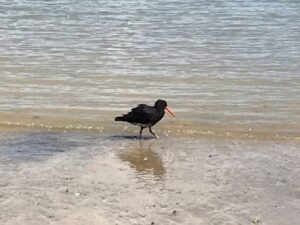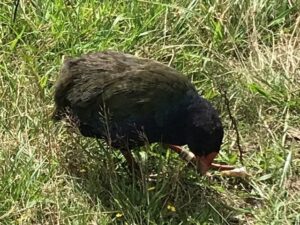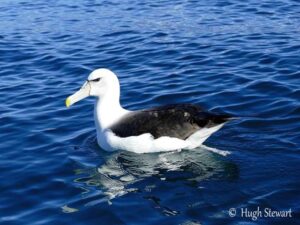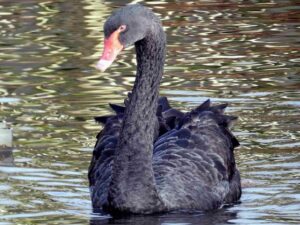Hugh’s News – 16 May 2020
For this latest issue, we have a report kindly sent in by Andy and Jo Morton of a trip to New Zealand earlier in the year.
“We have recently returned from holiday in the north island of New Zealand and would like to share our experiences of some of the birdlife there. We didn’t go equipped for bird watching or filming, but were observant of what was around us.
We spent most of our time in coastal areas (Auckland, Bay of Islands, Napier, Wellington), and common to all of these were the three resident gull species (black billed gull, red billed gull and black backed gull) and variable oystercatcher. In the Bay of Islands we travelled out into the bay where we saw tākapu (Australasian gannet) diving for fish, spotted shag, black shag, and white fronted tern, with great shearwater tipping their long wings into the water further out to sea. Elsewhere on the water we saw a white faced heron and black swans.
South of the Bay of Islands near Whangarei, we drove around the windy coastal roads where we came across pukeko (Australasian swamphen), quail and wild turkey by the side of (and sometimes in the middle of) the road.
Inland around Hamilton and Rotorua, we saw a number of native species – tui, welcome swallow, common myna, North Island robin and Australian magpie. Almost everywhere we went there were familiar species that had been introduced into New Zealand by European settlers – house sparrow, blackbird, song thrush and mallard. Out in the open countryside was the common sight of the swamp harrier circling for prey.
In Rotorua, there is a conservation project to protect the brown kiwi and we were lucky enough to see one in the dark.
Finally, in Wellington there is a large conservation area called Zealandia, with forest and lake habitat, and we were able to see tui, takahē, tieke (saddleback), kaka, kereru (New Zealand pigeon), fantail, koirimako (bellbird), little shag and brown teal. Tui have a noisy, unusual call that combines bellbird-like notes with clicks, cackles, timber-like creaks and groans, and wheezing sounds. They also copy other sounds (even the famous Nokia ringtone). Takahē is an endangered species that is being bred at Zealandia (and it even appears in the Air New Zealand in-flight safety video – see https://www.youtube.com/user/airnewzealand), as is the kaka, a large noisy parrot.
Back in 2012 we visited the south island, where we saw albatrosses and petrels whilst whale watching off Kaikoura, and also little blue penguin and yellow eyed penguin on the Otago peninsula.”
Andy & Jo Morton



